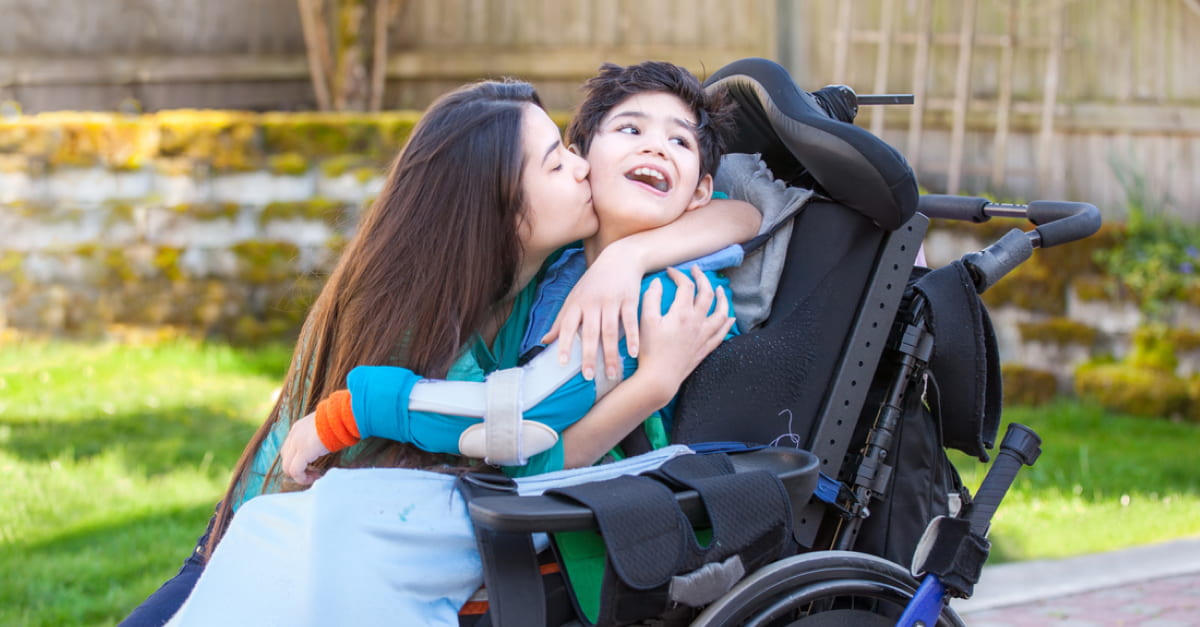Confronting Barriers to Finding Cerebral Palsy Resources

Children with health conditions like cerebral palsy (CP) and other disabilities often need full-time care and support throughout their lives. Sadly, too many families are unable to access the care they need because of rising costs and growing waitlists.
One Georgia family recently shared their story with ABC Action News, saying their son will soon finish high school. What should be a moment of excitement has turned into anxiety for parents scrambling to find programs their son can go to while they are at work.
Sadly, this family is not alone, as the barriers for people with cerebral palsy continue to worsen because federal funding for Medicaid remains stagnant.
For this reason, Cerebral Palsy Guide is dedicated to connecting as many families as possible to financial assistance resources. Reach out to one of our on-staff registered nurses today to find out if you’re eligible.
What Barriers Do People With Cerebral Palsy Face?
Children with CP may face a great many barriers to receiving the health care and support they need. On top of this, as children age out of daily school programs, families may have difficulties finding around-the-clock care for their child.
Children and adults with CP may face several barriers every day, including:
- Inadequate care for coexisting conditions, such as autism, depression, or anxiety
- Issues finding accessible and affordable housing
- Lack of funds to pay for day-to-day help
- Limited community resources for disabilities
- No accessible transportation
This is why advocating for people with CP and other disabilities is important. It ensures they receive the care, opportunities, and support they need to lead fulfilling lives.
Why Is There a Lack of Resources for Children With Disabilities?
Many families looking for care resources for CP or other disabilities rely on Medicaid programs to afford and access care. However, waitlists for these programs have grown exponentially, with nearly 500,000 people waiting for admission to care programs.
One leader of the non-profit United Cerebral Palsy, Diane Wilush, told ABC News that poor funding for Medicaid services is to blame for the shortage of care available.
The lack of resources for children with cerebral palsy can be attributed to:
- Stagnant funding for Medicaid programs: According to the National Governors Association (NGA), Medicaid is the largest payer of facility-based and home and community-based care, and without strong funding support, too many families and facilities are left behind.
- Staffing shortages because of underpaid workers: Georgia state hoped to allocate funding to increase care workers’ pay from $10 to over $16 per hour. The funding was cut by Georgia Governor Brian Kemp. Without livable wages, many care workers find higher-paying jobs or leave the field, causing staffing shortages.
- Long waitlists for Medicaid waivers and care offerings: As staffing shortages continue, facilities can only care for a certain number of patients, keeping too many from the care they need.
As a result, many families may seek care at facilities further away. For example, the mother of the Georgia family shared they finally found a program that would be able to help their son, but it would require two hours of driving every day.
“We count ourselves lucky that we even found a place for him because that’s not the reality for most families.”
– Georgia mother of a son with cerebral palsy
For many families across the country, navigating treatment options and seeking financial support can be overwhelming.
Want to learn more about treatment options and financial support? Download our free cerebral palsy guide today.
Fixing the Resource Crisis for People With Cerebral Palsy
Every child and adult with cerebral palsy deserves to have a vibrant life thanks to quality treatment, but sadly, too many families are unable to find or afford the resources they need.
Lifetime costs for cerebral palsy treatment can total $1 million or more, putting far too much financial stress on families, especially with the growing limitations of Medicaid programs.
Fortunately, there are resources to help aid the well-being of people with CP.
Some options for families of children with cerebral palsy include:
- Exploring birth injury lawsuit options if your child’s condition was caused by medical malpractice. The average settlement for a birth injury lawsuit is $1 million, which can help pay for their child’s treatment.
- Reaching out to nonprofit organizations like United Cerebral Palsy for help with assistive technology, education, employment, healthcare referrals, and much more.
Cerebral Palsy Guide is here to help. We have registered nurses on staff who are available to listen to your story and answer your questions.
Contact us today to see how we can help.

